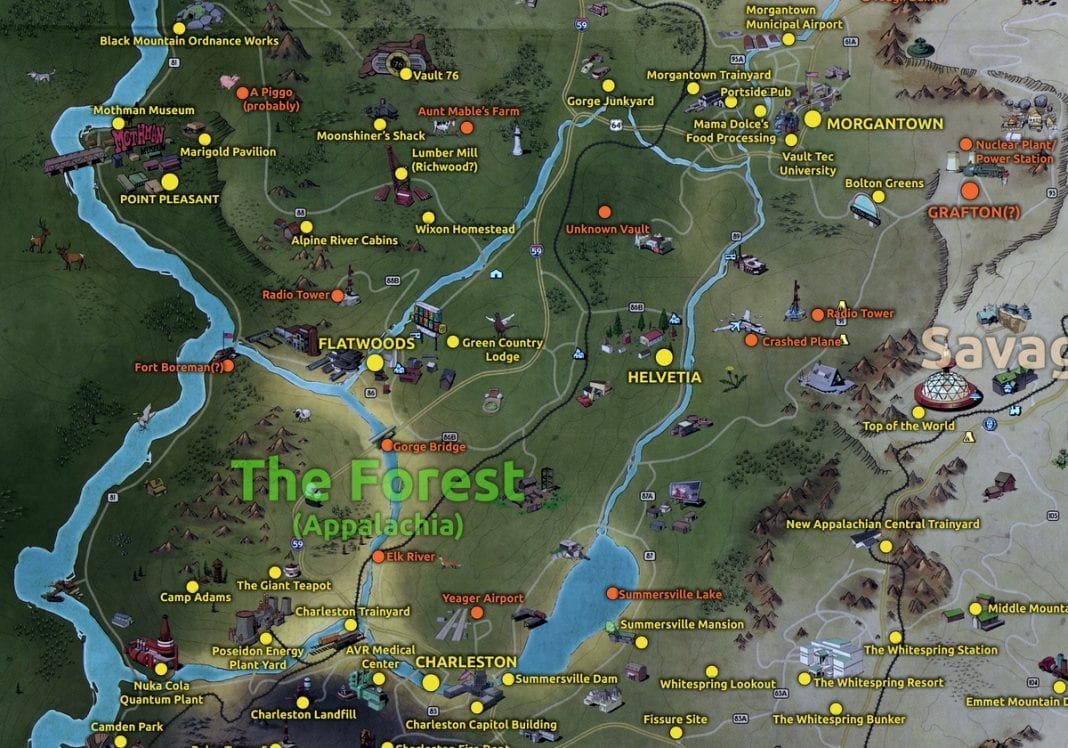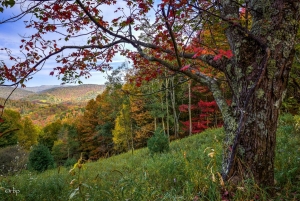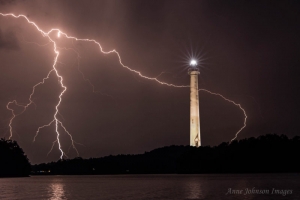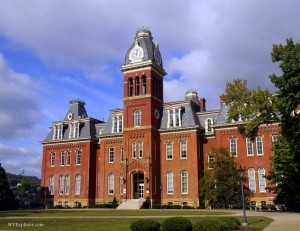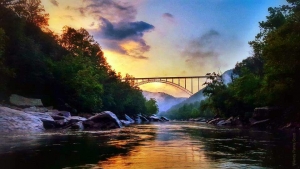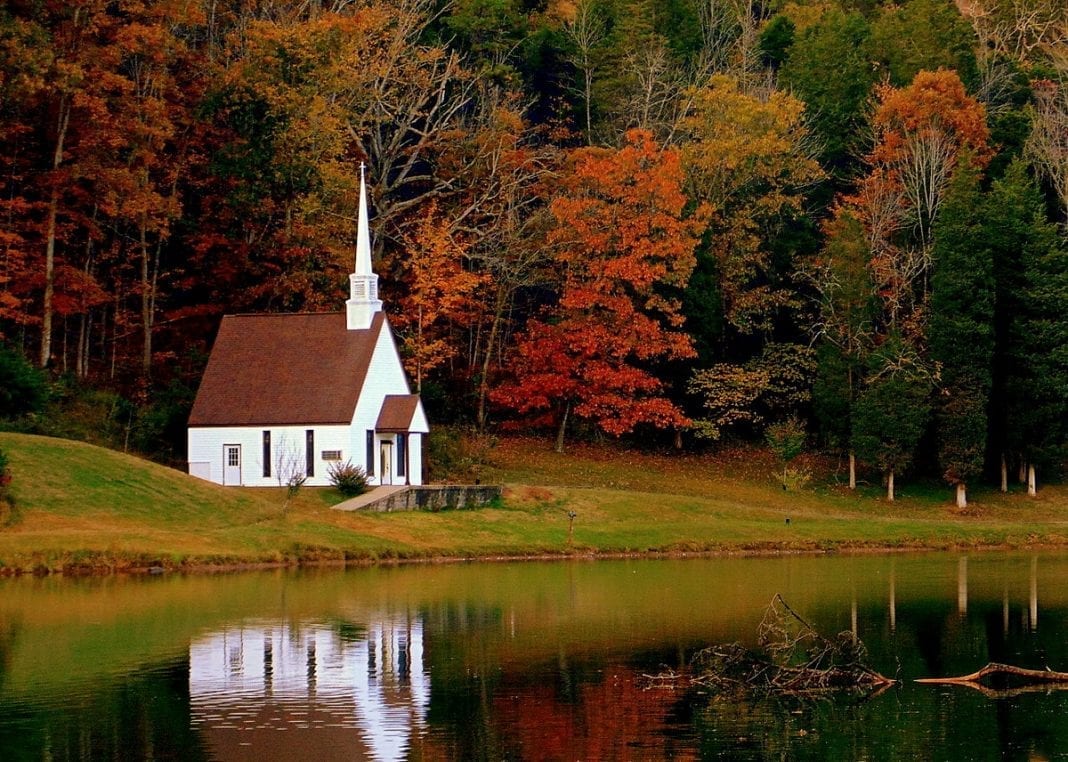Editor’s note: The sixth installment in John Barton’s examination of a map of the soon-to-be-released Fallout 76 video game investigates The Forest, based principally on the large, hilly heartland of central West Virginia.
When players first set foot outside Vault 76, they're blinded by sunlight then overwhelmed by the natural beauty that opens around them. This is vastly different from the post-apocalyptic wasteland featured in previous Fallout games.
The forest that surrounds the vault in all directions is an old-growth forest filled with trees and small wildlife, not all of which had been irradiated. In every direction, hills and forest extend into the distance. It's a vibrant, beautiful landscape. As Reclamation Day occurs mid-autumn, the hills are awash in the reds, yellows, and oranges. Such natural beauty illustrates why the Mountain State is known as “Almost Heaven.”
The Forest isn’t based on any specific location in West Virginia but is an amalgam of landscapes from the central state that extends west to Point Pleasant, east to Lewisburg, north to Morgantown, and south to the New River Gorge Bridge. The Forest represents the landscape most typical of West Virginia — scenic mountain vistas and rolling hills covered in trees and untouched by development.
This region is perhaps the largest section in the Fallout 76 map and takes up more than a quarter of the land in "Appalachia." It also represents a much larger part of West Virginia than do other mapped sections, though many locations found here aren’t situated where one might expect to find them when traveling in real-world West Virginia. Landmarks from other areas of the state have been pulled in.
Summersville Lake, for instance, isn’t visible from the capitol at Charleston nor is Morgantown near the center of the state. Although the area isn’t accurate in this regard, what's found is a fair depiction of the forested lands and cities and small towns that make up central West Virginia.
Several landmarks from Charleston make it into the game, including Yeager Airport and the gold-domed capitol. The state's largest airport, Yeager opened in 1944 and was named for General Chuck Yeager, of Lincoln County, the first pilot to break the sound barrier.
Morgantown appears as well, as do many buildings from the campus there at West Virginia University, renamed Vault-Tec University. One unusual feature of Morgantown seen in early screenshots from the beta is the city’s experimental Personal Rapid-Transit System, or PRT, one of the few mass-transit systems in West Virginia. The university, established in 1867, is one of the two largest universities in West Virginia, the other being Marshall University at Huntington, West Virginia.
Woodburn Hall, featured in Fallout 76 and built in 1876, is one of the oldest buildings on campus. For the past 40 years, the school has maintained an infamous reputation as one of the nation's top "party schools," consuming one percent of Anheusur-Busch’s beer production annually. Each year hundreds of couches are set fire in student celebrations of football games.
Summersville Lake is the largest lake in West Virginia and is used to produce hydroelectric power. The Army Corps of Engineers traditionally names lakes and dams after the nearest community, which in this case was the village of Gad. The corps decided that "Gad Dam" was inappropriate and chose to employ the name of nearby Summersville instead. The lake is a popular recreation area used for fishing, rock climbing, snorkeling, and boating. The Summersville Lighthouse also appears in the map, though located somewhat farther north of its lakeside setting.
The New River Gorge Bridge, completed in 1977, was until recently the longest single-span arch bridge in the world and, at 876 feet above mean river level, is one of the highest vehicular bridges in the world. Home to the annual Bridge Day celebration, during which more than 100,000 people walk out onto the span. Bridge Day is the only occasion when parachuting is permitted in a U.S. national park.
Other locations designated here include Lost World Caverns, the West Virginia Ordnance Works, the Swiss village of Helvetia, and the communities of Richwood, Grafton, Flatwoods, and Point Pleasant, the latter three of which are home to three of the state's legendary monsters. The Mothman Museum at Point Pleasant is also a featured landmark. Also a noteworthy landmark, the Chester Teapot is in actuality located at the very northernmost tip of West Virginia.
More Fallout 76 Coverage
- Mapping Fallout 76: John Barton explores The Savage Divide
- Mapping Fallout 76: John Barton explores The Ash Heap
- Mapping Fallout 76: John Barton explores Toxic Valley
- Mapping Fallout 76: John Barton explores Cranberry Bog
- Mapping Fallout 76: John Barton explores The Mire
- Writers track real W.Va. locations that appear in Fallout 76 map
Sign up to receive a FREE copy of West Virginia Explorer Magazine in your email weekly. Sign me up!
